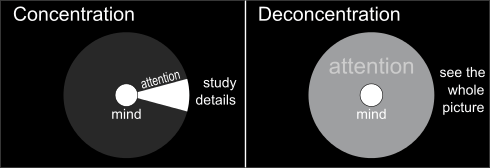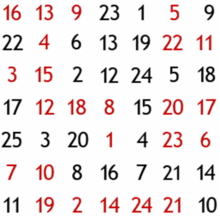Deconcentration of attention
Deconcentration of attention is opposite to concentration and can be interpreted as a process of dismantling of the figures in the field of perception and transformation of the perceptual field into a uniform (in the sense that no individual elements could be construed as a perceptual figure) background.[1][2]

History

The term was introduced by Oleg Bakhtiyarov on the basis of research performed in the 1980s at the Kiev Institute of Psychology, USSR. Deconcentration of attention was originally developed "… as part of training programs for operators in the complex, uncertain, and extreme conditions".[1][2]
Current applications
The technique of deconcentration of attention is currently a part of psychonetics, a group of psychotechnologies aimed to provide access to various mind resources for practical applications.[3][4]
Deconcentration is considered to be one of the basic functions of attention. Thus, it has a potential for applicability in various areas. There are attempts to adapt deconcentration of attention in sensory space to address psychological and physiological issues encountered in extreme sports, such as freediving.[5] There are also attempts to adapt deconcentration of attention in mental space to help addressing complex problems in software engineering.[2]
References
- "Archived copy". Archived from the original on 2013-01-13. Retrieved 2012-01-27.CS1 maint: archived copy as title (link)
- "Deconcentration of Attention: addressing the complexity of software engineering" from http://deconcentration-of-attention.com
- (in Russian) http://www.university.kiev.ua/
- (in Russian) http://psyhonetika.org/
- "http://molchanova.ru/en/article/attention-deconcentration-freediving"